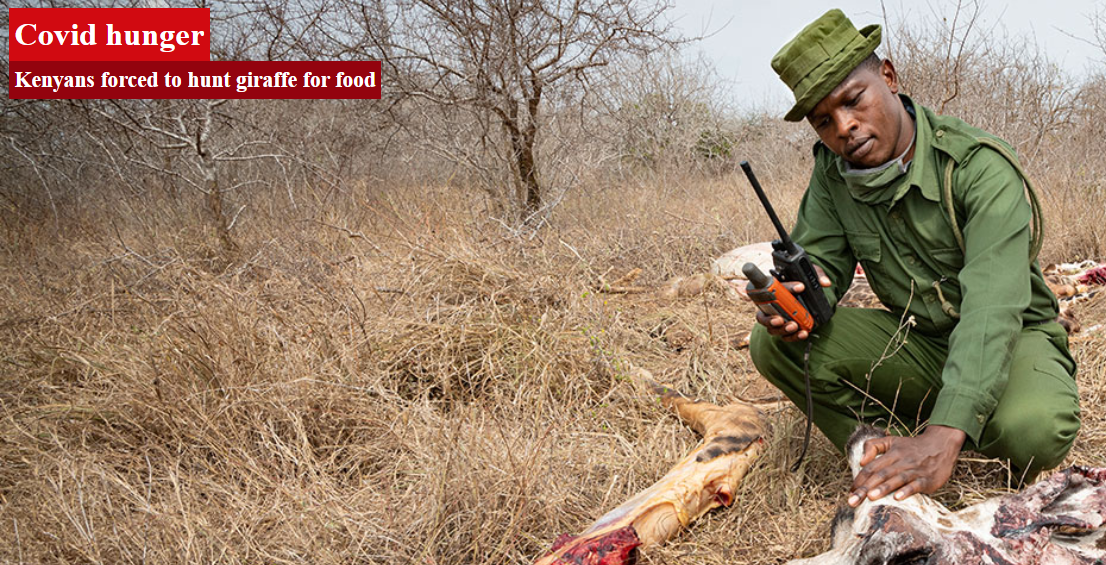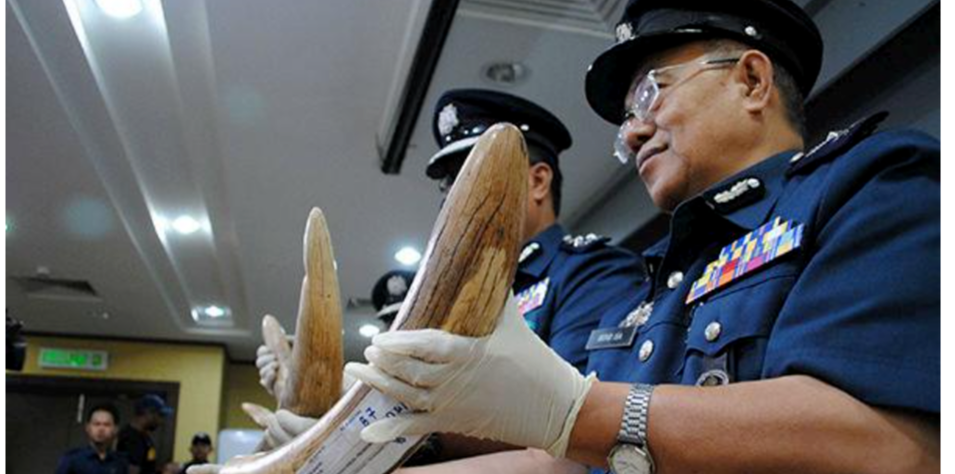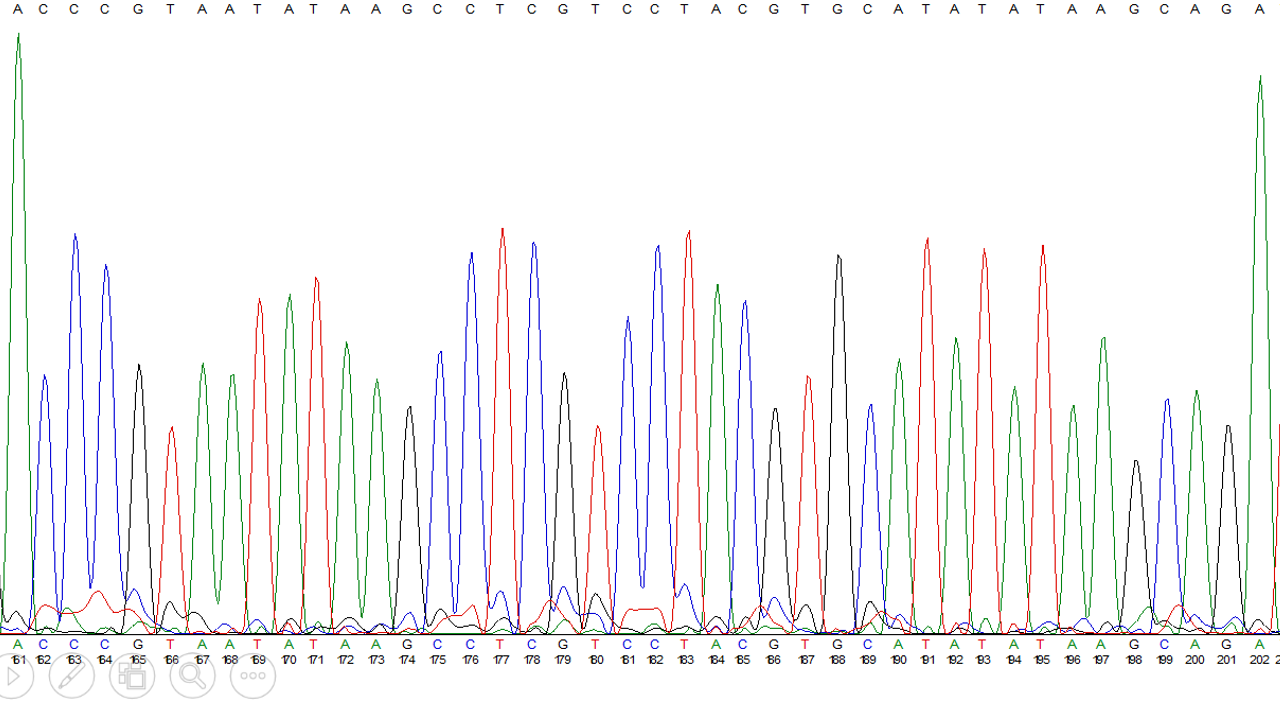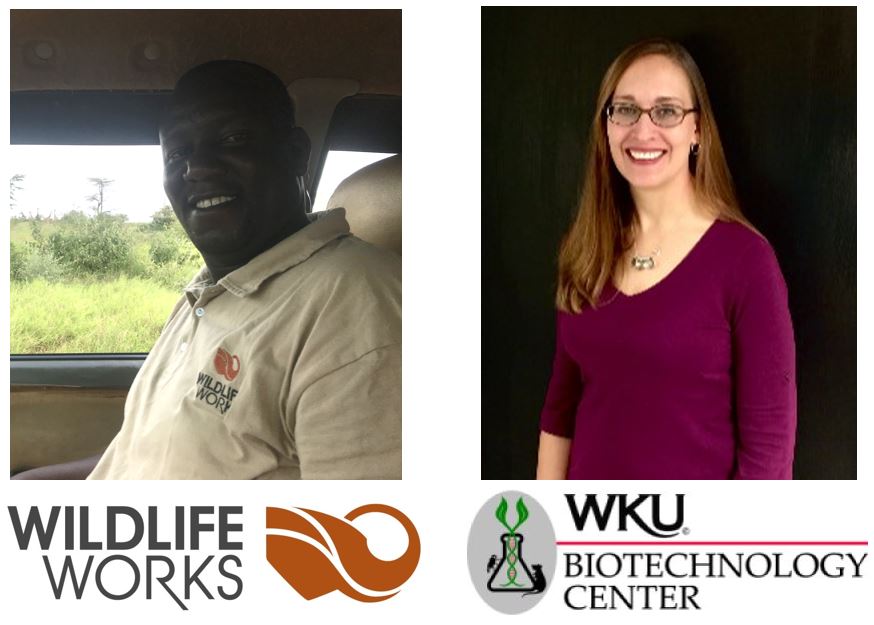Lab 12: Pre-Lab
Over the next several years BIOL 121 students will be testing meat samples from Kenya, through DNA analysis, to determine if poaching and bushmeat use is threatening conservation efforts. We are currently testing the procedures that will be used for this research project. You will be provided the output of various steps so you can complete the process of species identification. In labs 10-12, your task will be to identify the species of origin of a meat samples from Kenyan butcheries. You will learn about poaching, the bushmeat crisis and practice key techniques to complete DNA analysis of your samples. To prepare for Lab 12, please review this pre-lab. Once you feel confident regarding the below topics, and have your Lab Notebook ready from last week, complete the corresponding LABridge in Blackboard.
-
Introduction/Review
-
Do you know enough?
-
What will we do in lab?
-
LABridge
<
>
Review of Gel Electrophoresis
Last week we ensured we still have DNA and that it is the right gene (the right length). We also made some calculations so we have an estimate of the amount of CYTb fragments we may have in our sample

Please review this information on gel electrophoresis.
Shorter DNA molecules move faster and migrate further down the gel. Longer ones migrate slower remain closer to the top of the gel. You can tell how long each fragment is by comparing them to the ladder, usually placed in the first and last lanes. The ladder contains fragments of known size so you judge how long your unknow fragments are via comparison. See the example in the side bar
|
Do you know enough about sequencing & BLASTing
After amplification through PCR and visualization through gel electrophoresis, these are our last steps to get to species identification. Sequencing allows us to see the actual nucleotide sequence code in our GoI. The order of As, Ts, Cs and Gs is specie-specific in the cytochrome b gene. Once we know the sequence we will use a powerful search database to identify the actual species of origin.

Please review the five key steps below.

Read the article below. It was the first phase of the research we are now continuing in BIOL 121.
3) What will we do in lab & how will we do it?
In lab 12 we will complete analysis of our bushmeat samples! We will work through steps 5 and 6, making some changes based on our online only format.
Lastly, you will be asked to make some conclusions based on our results, and to think about what those conclusion may mean for the bushmeat crisis overall.
- Sequencing: You will be provided with output from the DNA sequencer in the WKU Biotechnology Center for each bushmeat sample.
- Blasting: You will then enter the sequences into a database for species identification.
Lastly, you will be asked to make some conclusions based on our results, and to think about what those conclusion may mean for the bushmeat crisis overall.

Please review the steps and sequence below, with a focus on steps 5 & 6
1) Sample PROCESSING
Bushmeat Processing: Using aseptic techniques, the bushmeat samples are cut into approximately 1 cc sections. They labeled and stored in ethanol at -20 degrees Celsius. Special care is taken to ensure no cross-contamination or human contamination occurs. Samples are then carried back or shipped to the WKU biotechnology Center. -----> This has already been done. |
2) Digestion & Extraction
This process is similar to the extraction we completed with the strawberry. However it involves many more steps and results in a cleaner product with far less protein. We use special "kits" as pictured to streamline the process. Digestion liquefies the tissue in such a way that keeps the DNA intact for extraction. Once extraction is complete, the DNA sample is tested to ensure an adequate amount of intact DNA was extracted from the sample. -----> This process has already been done with our meat samples. In Lab 10, you will practice extracting DNA from a strawberry to better understand this process |
3) Polymerase chain reaction (PCR)
PCR makes copies of a DNA fragment from one original copy. The goal is to amplify a specific region, the target DNA or gene of interest (GoI), depending on the type or goal of research. The PCR cocktail includes the following ingredients: the DNA sample, primers (short sequences of RNA or DNA that start replication), dNTPs (free nucleotides), taq polymerase (a heat stable form of DNA polymerase derived from bacteria) and a buffer solution. There are three steps to PCR in which the temperature is cycled (in the thermo"cyler"). You need to know the steps and what happens in each! The total number of resulting DNA strands is (the number of original strands) X 2^n, where n = the number of PCR cycles. -----> In Lab 11, you will be given PCR products from our meat samples in lab and asked make some calculations. |
4) Gel electrophoresis
Agarose gel electrophoresis is a method used to separate DNA strands by size, and to determine the size of the separated strands by comparison to strands of known length. Your PCR products are deposited in the top of the gel. Using electricity, the DNA (with a negative charge) is pushed through the gel towards the positive electrode. As your gel "runs," the DNA is separated by size. The DNA strands show up as bands under UV light and you can read the results. Your products can be compared with the ladder or marker, which has standard sized DNA fragments of KNOWN length used for comparison. In this way, you can know the exact length of your DNA samples. -----> You will MAKE & RUN an agorose gel in Lab 11 to make sure our PCR product contains the cytochrome b gene. |
5) Sequencing
Once we know we have amplified (copied) the right gene we are ready to sequence the gene. We expect the sequence (the order of As, Ts, Cs and Gs) within the cytochrome b gene to be different for different species. Samples are placed into a sequencer apparatus which can detect the order of nucleotide bases in our sample. The sequence is then cleaned and edited, |
6) BLASTing
6) BLASTing: The National Institute of Health (NIH) and National Center for Biotechnology Information (NCBI) hosts a database called GenBank, which houses all known DNA sequences. Once the sequences of our samples are ready, they are pasted into a search tool (called a BLAST) which matches them to the correct species! -----> You will be provided the sequence of successful samples in Lab 12 and asked to determine the species of origin in lab. |
Lab 12: ProtocolYour task in Lab 12 is review the role of bushmeat in global pandemics. You will identify the species of origin of our meat samples from a Kenyan butchery and discuss conservation efforts which may conflict with human needs.
Exercise I. In our Current Context Exercise II. Identify the Species of Origin Exercise III. Conclusions |
-
Exercise I
-
Exercise II
-
Exercise III
-
Exam Prep
<
>
Exercise I. In our Current Context: How the pandemic has affected the bushmeat trade and how the bushmeat trade may cause the next one too...
There are significant fears that the pandemic will devastate conservation initiatives and local communities reliant on tourism; a worsening economic outlook will lead to more poaching and bushmeat utilization, thus threatening more wildlife. Increased bushmeat utilization places humans in endanger as well; COVID-19 was may have been transmitted to humans as part of the wildlife trade in Asia. A true accounting of the prevalence of the bushmeat trade is more important now than ever.
Procedure
- Please read the following article: Somerville, Keith. 2020. FOCUS Wildlife & Pandemics: COVID-19, bushmeat and poaching in Africa. Global Geneva. 14 September.
- Please read the following article: Vidal, J. 2020. Tip of the iceberg’: is our destruction of nature responsible for Covid-19? The Guardian. Australian Edition, 18 March.
|
|
|
Exercise II. What is the species of origin?
After your reading in Exercise I, I hope you understand why this research is more important than ever. Let's finish up the analysis and see what we have. Once we've confirmed amplification via PCR through the gel electrophoresis, the samples are sequenced using a sequencing machine, which provides a read-out of the sequences of nucleotides within the sample. This process can be done in the WKU Biotechnology Center, or the samples can be shipped out for analysis
|
Procedure: Confirm the actual species of origin for our samples and compare it to the putative species (what is was sold as).
|
Exercise III. What have we learned? (class discussion)
Procedure
Think back to where we started. If you need to go back to the Pre-Lab for Lab 10, or explore the bushmeat section of our research library. Think about the questions below and complete the Lab Notebook Guide. We are going to discuss our results and this project as a class.
Think back to where we started. If you need to go back to the Pre-Lab for Lab 10, or explore the bushmeat section of our research library. Think about the questions below and complete the Lab Notebook Guide. We are going to discuss our results and this project as a class.
- Why is it important to understand bushmeat use in Kenya?
- Is bushmeat use for private needs different than a commercial enterprise wherein poached meat is sold to the public? Why or why not?
- Could these types of practices happen here?
- Do you think they could have an impact on conservation initiatives or public attitudes toward wildlife?
- What factors are contributing to this crisis in Kenya?
- How can or should we move forward?
Collaborators
ACKNOWLEDGEMENTS: CO-AUTHORS. Science is a collaborative process. Simon Kisaini (at left) has been working to conserve Kenya's wildlife since his youth and continues to do so now through Wildlife Works in Kasigau. He designed our sampling and field preparation protocols. Naomi Rowland (at right) is the Lab Coordinator for the WKU Biotechnology Center and developed and tested the molecular protocols for this research.
Final Comprehensive Exam: Week Before Finals Week/ Regular Lab Day & Time
|
Bring YOUR DEVICE (iPad, laptop, etc.)
The Exam
|
Basic Outline of BIOL 121 Content
|
|
Lab 12 BIOL 120 CONNECTIONS Section 1.6: Doing Biology Big Picture 1: How to Think Like a Scientist Chapter 4: Nucleic Acids Chapter 8: Enzymes Chapter 12: The Cell Cycle Chapter 15: DNA and the Gene: Synthesis & Repair Chapter 16: How Genes Work Chapter 20: The Molecular Revolution Chapter 54: Biodiversity and Conservation Biology *BIOL 122 |
KAS citation format:
Mountjoy, N.J 2021. Title of page. Biological Concepts: Cells, Metabolism & Genetics. https://www.121cellmetagen.com. Date accessed (MM/DD/YYY).
Mountjoy, N.J 2021. Title of page. Biological Concepts: Cells, Metabolism & Genetics. https://www.121cellmetagen.com. Date accessed (MM/DD/YYY).




























